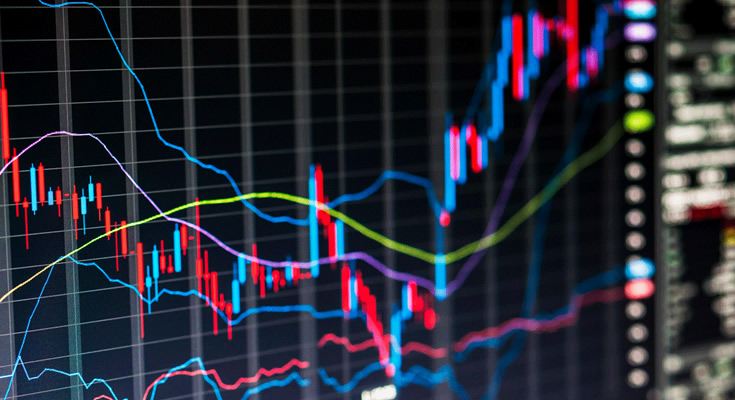by Paul Sanger
At noon, the S&P/ASX 200 is 0.68 per cent or 47.40 points higher at 7045.50.
The SPI futures are pointing to a rise of 56 points
Best and worst performers
The best-performing sector is Energy, up 2.00 per cent. The worst-performing sector is Consumer Staples, down 1.64 per cent.
The best-performing stock in the S&P/ASX 200 is Paladin Energy (ASX:PDN), trading 12.93 per cent higher at $0.83. It is followed by shares in Insignia Financial (ASX:IFL) and IDP Education (ASX:IEL).
The worst-performing stock in the S&P/ASX 200 is City Chic Collective (ASX:CCX), trading 19.92 per cent lower at $1.97. It is followed by shares in Kelsian Group (ASX:KLS) and Perpetual (ASX:PPT).
Asian markets
Markets in the Asia-Pacific traded higher ahead of the Jackson Hole symposium kicking off stateside.
Japan’s Nikkei 225 is 0.34 per cent higher, while the Topix is up 0.22 per cent. In South Korea, the Kospi has risen 0.56 per cent and the Kosdaq is up 0.49 per cent.
Hong Kong is slated to report July’s trade data later in the afternoon, while Japan is expected to release its latest Producer Price Index for the month of July. Hong Kong has delayed the open of its $5.1 trillion stock market and suspended classes on Thursday because of tropical storm Ma-on.
BOK hikes by 25 bp as expected
As widely expected, the Bank of Korea raised the benchmark seven-day repo rate 25 bp to 2.5 per cent. Tihs marks the seventh rate hike in the current cycle, taking cumulative tightening to 200 bp since August last year. On economic forecasts, 2022 inflation is seen as rising 5.2 per cent (vs the prior 4.6 per cent), for the highest projection since the inflation target system currently in place was introduced in 1998. The BOK previously signalled more rate hikes would come in the near term. Governor Rhee said last month that inflation is expected to peak late in Q3 or early Q4, adding BOK will likely push for one or two more rate increases by year-end, but they will most likely be incremental 25 bp rises (Yonhap). However, economists are divided on where rates will be by year-end. Among the 36 surveyed in a Reuters poll, three said the BOK would stop at 2.50 per cent, half of respondents said 2.75 per cent, 14 said 3.00 per cent and one had a 3.25 per cent forecast.
China announces another round of policy support
The State Council announced 19 additional measures to help stabilise the economy (Xinhua). Key message beats remained the same: economic recovery is still not sold, and the council pledged enhancements to its toolkit without resorting to massive stimulus. It will aim to keep major economic indicators within the proper range and work for the best results possible — the latter phrasing being introduced in place of the government GDP growth target of about 5.5 per cent, which is now seen as all but out of reach. More than CNY300B ($44B) was added to the quota for policy-backed and development-oriented financial instruments to specific projects. A local government special bond quota worth over CNY500B to be issued by October was signalled, as was CNY200B of special bonds to support electricity producers for energy supply. Detailed plans will be formulated by relevant departments for implementation by the end of September.
China regulator warns banks against yuan selling
Reuters, citing multiple sources, reported the State Administration of Foreign Exchange (SAFE) phoned several banks on Wednesday to warn them against aggressively selling the Chinese currency in a new sign of official discomfort with recent yuan weakness. In an email statement, SAFE told Reuters it had not seen institutions unreasonably buying large amounts of foreign exchange in August, when market supply and demand were stable. SAFE added that the yuan remained resilient compared with other currencies, following recent rapid dollar gains, while China’s robust trade surplus and utilisation of foreign capital continued to play a fundamental role in stabilising cross-border flows. Yuan declines in August are the steepest since April, when China cut banks’ currency reserve requirements to support the yuan.
China H1 M&A deals fall to eight-year low
Nikkei cited a PwC report showing the value of China’s H1 M&A transactions had fallen to the lowest level since 2014, while the number of “megadeals” dropped by half, with little hope for a quick rebound. It was suggested that easing in adverse factors, such as COVID, weak stock markets and regulatory and geopolitical concerns, would be needed to revive confidence. The biggest transactions were concentrated among state-owned enterprises with a focus on reforms, industrial upgrades, recapitalisations and integrating large SOE groups. But the Communist Party Congress later this year (where President Xi is vying for an unprecedented third term) was cited as a reason to hold off. There is also broad weakness in private equity, though coming off elevated levels. Outbound M&A has risen by 30 per cent, with deal values growing “significantly”, but this was mostly due to a SOE-backed consortium’s $15.5B acquisition of Aramco Gas Pipelines.
Chongqing extends factory power cuts indefinitely
The manufacturing hub of Chongqing said Wednesday that it is extending the blackout imposed on factories until further notice to deal with a power shortage caused by the extreme heat. Curbs were originally implemented in the middle of the month and scheduled to run through to 24 August in anticipation of cooler weather, though temperatures remained above 40 degrees Celsius. This has hit the auto industry hard and could pose a risk to global supply chains if it continues. Neighbouring drought-stricken Sichuan province also extended its factory blackouts to Saturday. Cargo shipping on the Yangtze River also has been disrupted as the lack of rain diminishes water levels. About 15 per cent of the electricity used in Chongqing comes from Sichuan, which is home to many hydroelectric dams. Because rainfall has dropped by half, Chongqing has lost almost all of its access to Sichuan’s power supply.
Company news
Anson Resources (ASX:ASN) today announced that it has joined forces with global DLE leader Sunresin to develop a full-scale commercial lithium plant at the Paradox Lithium Project. Anson has executed a binding MoU with leading global DLE technology provider Sunresin for a long-term strategic and commercial alliance. Sunresin has successfully concluded eight months of engineering design work for the Paradox Lithium Project’s DFS, with the DFS to be released in near future. Anson will work closely with Sunresin to negotiate agreements for construction of a full-scale commercial lithium plant using Sunresin’s patented Direct DLE technology. Sunresin’s DLE technology has been commercialised with four operating projects and a further six under construction or under contract in China and South America, with a total production capacity of 73,000tpa. Shares in ASN are trading up 45.25 per cent at 30.5 cents.
Bulletin Resources (ASX:BNR) today provided an update on its Ravensthorpe Lithium Project. The project is located only 12km southwest, from the strike of Allkem’s Mt Cattlin Lithium Mine. BHM Process Consultants were engaged to undertake the testwork. The results from this early phase of testwork are highly encouraging, and confirm the pegmatite mineralisation at the Ravensthorpe Lithium Project to be of a very high quality and able to achieve saleable product grades. Shares in BHM are currently trading up 11.11 per cent at 15 cents.
Paragon Care today announced an agreement has been reached to acquire the business of Specialist Medical Supplies for $15.5 million dollars. SMS is the leading supplier in Australia of biopsy and skin lesion instrumentation and other related products. Paragon Care’s Group CEO and Managing Director Mark Hooper commented: “SMS fits neatly into the existing Paragon Care ‘pillar’ structure, with significant customer alignment so this acquisition is logical in terms of a strategic match and our capability to expand its portfolio across Paragon Care’s existing sales and distribution channels”. Shares in PGC are currently trading up 9.86 per cent at 41.5 cents.
Magnis Energy Technologies (ASX:MNS) has announced further significant results from the EFC battery program. The results showed only 3 per cent loss of the initial cell capacity after approximately two thousand six hundred cycles. The cells are developed using BMLMP technology, which delivers superior battery life with fast charge capabilities, while containing no nickel or conflict metals such as cobalt. The BMLMP technology is patented by C4V, which Magnis has a 9.65 per cent stake in. Magnis Chairman Frank Poullas commented: “Today’s game changing results are very exciting for everyone involved. With the iM3 New York Lithium-ion Battery Plant being in commercial production, we have a platform to produce batteries using new technologies once they have been commercialised.” Shares in MNS are currently trading up 3.26 per cent at 47.5 cents.
Commodities and the dollar
Gold is trading at US$1756.20 an ounce.
Iron ore futures are pointing to a rise of 0.84 per cent.
One Australian dollar is buying 69.41 US cents.














